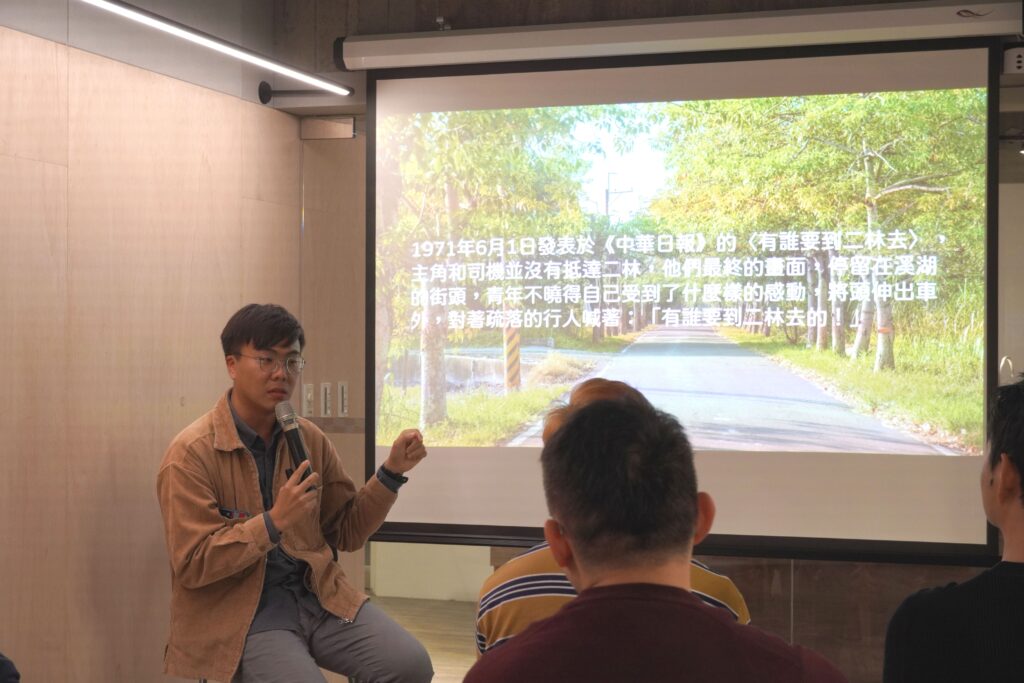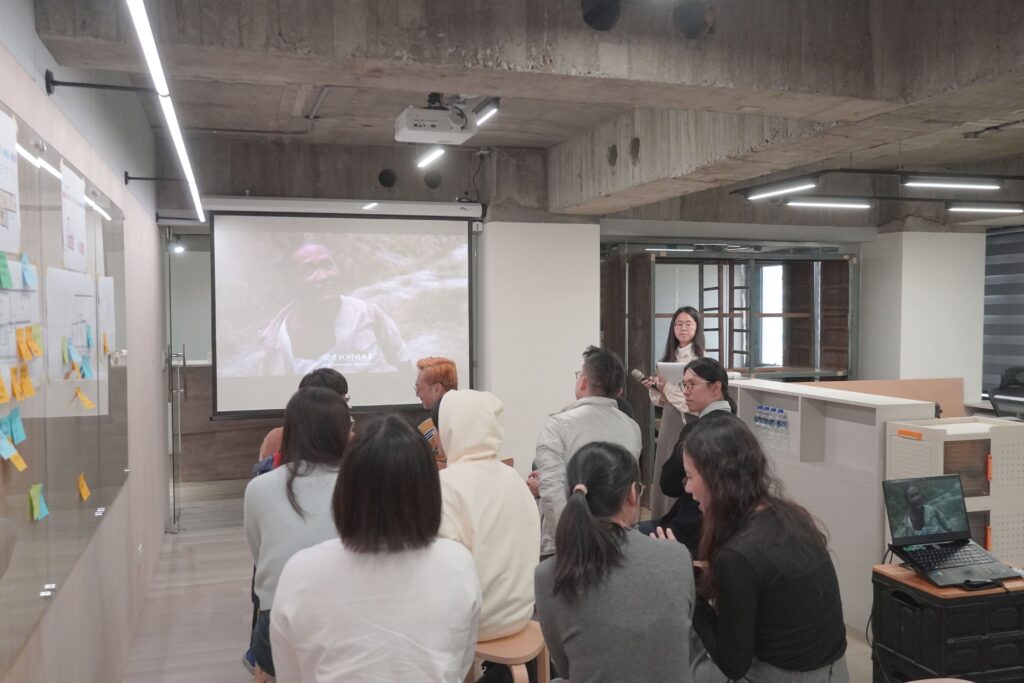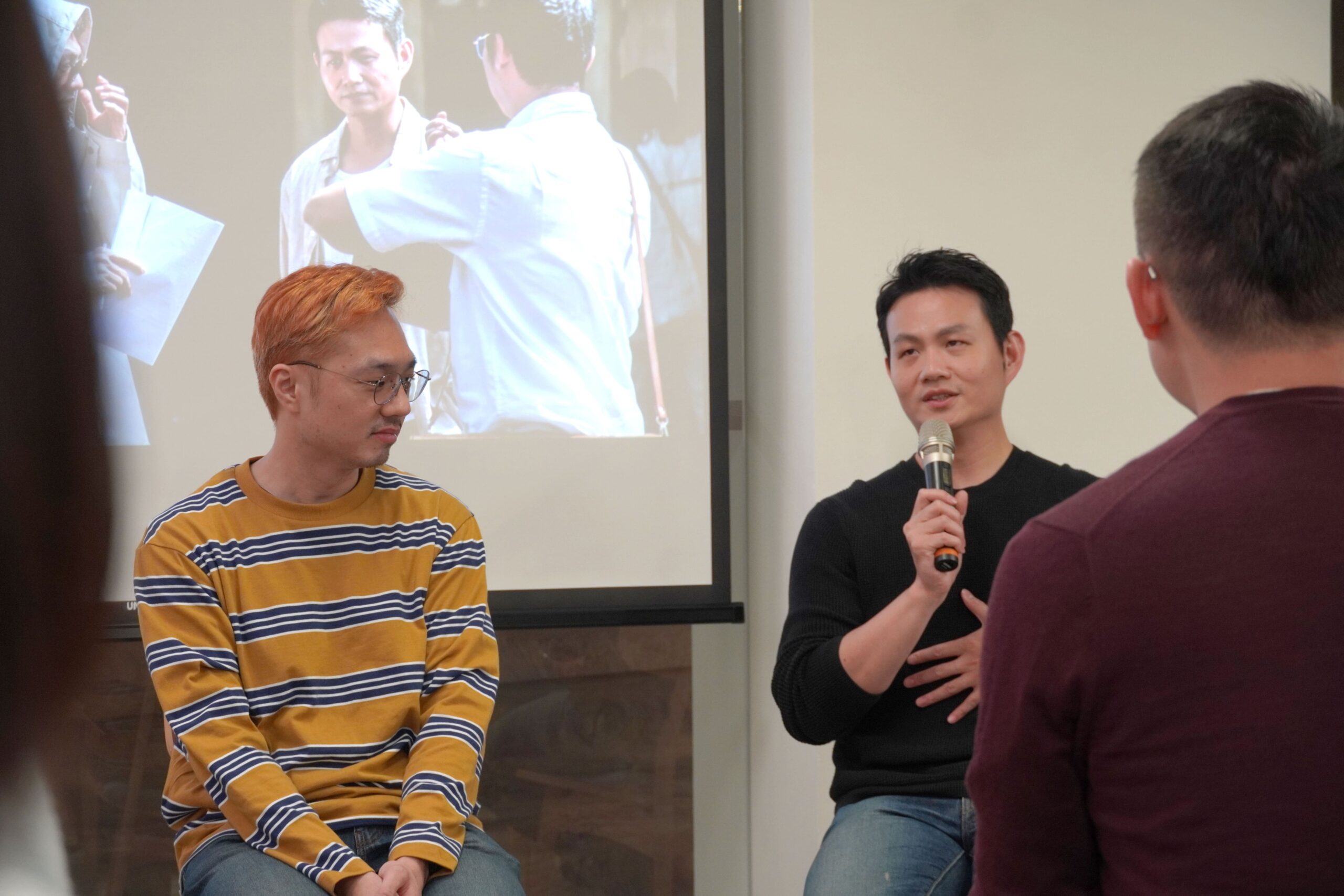Taste of Homeland Soil: 12/12 ᴛʜᴜ. A Screening and Symposium on the Homecoming Trilogy
X-Basic Planning recently hosted a screening and discussion of the Homecoming Trilogy on December 12, featuring producer Hung Chung-ming, consultant Lai Chao-nan, and lead actor Wang Ching-tun of My Land. Together with the audience, they explored the films’ artistry and shared reflections on the meaning of home.
The four-year filmmaking journey of the Homecoming Trilogy, along with the production team’s dedication and the profound humanistic warmth of the films, have long been deeply admired by our team. We were delighted to support this beautiful work through its 2023 campus screening crowdfunding, and we are thrilled by the successful public release of My Land. Sustaining local culture requires more than preserving places—it needs diverse interpretation and expression. Through the adaptation of Taiwanese literature, we aim to make its island-rooted creative spirit resonate with audiences across generations.

(The following content will mention plot details of the ‘Homecoming Trilogy’)
A Journey in Search of Roots

The Homecoming Trilogy opens at the bustling Changhua Station. In Who Wants to Go to Erlin, a young man traveling home for Tomb-Sweeping Day misses his bus and joins a shared taxi, embarking on an unexpected journey. Trapped in the stuffy car, the protagonist endures small talk with the local elders. While he feels a flicker of hometown warmth, their relentless, clichéd advice about life and filial duty grates on him, heightening his discomfort. Yet, the driver’s mournful talk of a changing city and its departing youth stirs an unexpected homesickness in the protagonist, prompting him to yell from the car: “Who wants to go to Erlin!”
When one’s hometown is no longer part of daily life, returning can feel almost illegitimate, something done only on holidays. Who Wants to Go to Erlin conveys Hung Hsing-fu’s complex emotions after moving to Taichung and growing detached from his native land. By adapting the story to the present day and extending the journey to Taipei, Sugarcane Cultural Studio shows how this tale of homesickness remains vividly resonant, even half a century later.
While reading the story, Mr. Hung Chung-ming realized that his own route home mirrored Hung Hsing-fu’s, from Changhua through Xioushui, Puyan, and Xihu to Erlin. This shared, unchanged path connected him to the author and offered an authentic, unhurried setting for the film’s taxi journey. For their field research, the production team took the taxi ride from Changhua to Erlin, gathering drivers’ insights and passenger mannerisms to enrich the script with local authenticity.
‘Father,’ the trilogy’s second part, focuses on “family,” using a restrained visual style to trace the emotional path from parental conflict to reconciliation. In 1960s rural Taiwan, the young boy is punished for a failed exam and late school fees. His tearful appeal to his father results only in a stern scolding. Though stern, the young boy’s father shows his love through action: borrowing money from friends, soothing his son’s bruised palms with ginger and rice wine, and confessing his regret over his own lack of schooling. This shared, painful warmth bridges the distance between them. The film concludes with the grown-up boy, now a father and teacher, humming his father’s tune to his child. He then revises his manuscript, striking through Father Sitting by the Stove to write Honorable Father—a final, graceful tribute.
Unlike the modernized first film, Honorable Father remains dedicated to evoking the precise temporal and spatial setting of the original semi-autobiographical story. The team’s dedication to authenticity was meticulous. They filmed in Hong’s hometown, located a stove identical to the one described in the novel, and interviewed his former classmates. Their research shaped even the smallest details, such as the school uniform—a symbol of Hong’s poverty, as he owned only one, provided through his classmates’ generosity for a graduation photo.

The Promised Land, Brambled and Bound
Unlike the intimate focus of the first two works, My Land has a broader narrative scope. The studio uses this foundation to explore the deep, complex ties—and their heavy constraints—between people, their family, and their land. As the eldest son in a farming family during the late Japanese colonial period, Ma Shui-sheng witnessed his father’s relentless determination to defend their land, a fight that knew no bounds, not even bloodshed. In adulthood, bearing the burden of his family’s fate, he faced a heart-wrenching decision to ease his parents’ chronic illness: sell the ancestral land or give up his child.
Of the three short films, My Land proved to be the most difficult to bring to the screen. The team went to great lengths for authenticity, finding a rare earthen-yard courtyard and hiring locals to build the set. They even hired a Taiwanese expert Lai Chao-nan to meticulously coach the actors’ Erlin accents. This dedication ensured the story was rooted in its true origins, helping younger audiences reconnect with the local language.

At the post-screening talk, actor Wang Ching-tun shared that his personal life had uniquely prepared him for the role of Ma Shui-sheng. Having recently experienced family loss and the demolition of his childhood home, he deeply understood the character’s struggles. He infused this personal resonance into his performance, creating a more resilient version of Ma Shui-sheng than the script initially outlined.
The most difficult part for Wang Ching-tun was perfecting the character’s accent. Fortunately, the three-day shoot was sufficient for him to adapt to the character’s language, a process that brought him closer to embodying Ma Shui-sheng’s spirit. Though he suffered a scraped arm, a shoulder injury from the sugarcane fields, and treacherous footing in the rain, the shoot was an invaluable journey. It wasn’t just about connecting with the story and setting; the crew’s passion also reawakened his own love for screen performance.
For the film’s Taiwanese dialect coach, Lai Chao-nan, the ‘Tong’an accent’ was entirely new, requiring him to painstakingly reconstruct the dialogue by cross-referencing academic research. Linguistically analyzing the novel, he discovered its plain style was underlaid with rich colloquialism. He identified that converting Taiwanese to Chinese characters, then Chinese characters back to spoken Taiwanese created inevitable subtle losses. His aim for the film was to preserve these nuanced oral expressions as much as possible.
According to Lai Chao-nan, Taiwanese audiences are skilled at distinguishing British and American accents yet often unaware of their own regional speech differences. He regards My Land as a bold and meticulous exception to the general neglect of dialects in Taiwanese cinema. Mr. Lai was deeply moved to see the actors employ the Tong’an accent to recreate the era, feeling as though he had stepped into the Erlin countryside of 1940s to 1960s. The past was suddenly liberated from the novel’s descriptions. This experience inspired him to find ways to preserve his hometown’s distinctive accent, ensuring its refined linguistic character would endure for generations.
The Homecoming Trilogy goes beyond adapting literature to become an active force in preserving and advancing local culture. Mr. Hung Chung-ming prioritized giving back to the community at every stage. He converted the film set into a public exhibition space and made a point of patronizing local restaurants during production, channeling resources directly into the local economy. Sugarcane Culture Studio frames Taiwan’s unique spirit, moving from intimate family emotions to the deep ties between people and land. Through their visual and textual translations, they connect local literature with a new generation. We believe that during the viewing process, people with different life experiences can resonate with the film, understand each other, and further contemplate how to protect that irreplaceable ‘My Land’ in their hearts amid changing times.
